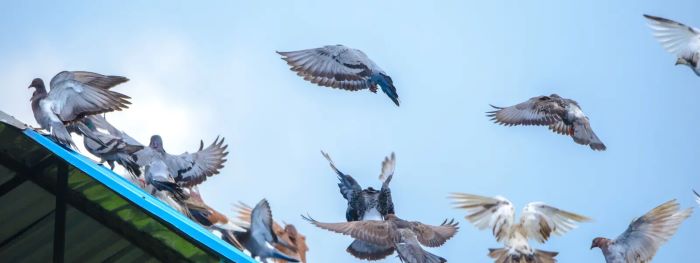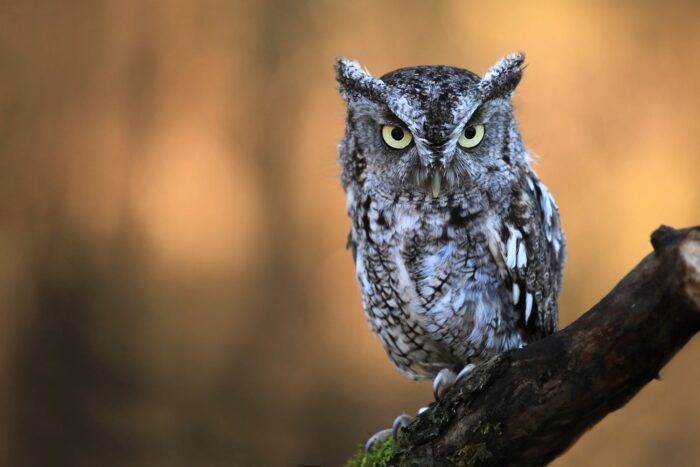Owls are mysterious creatures of the night that capture our imagination. With their large, staring eyes and haunting hoots, owls seem almost supernatural. One of the more intriguing owl behaviors is their dawn singing – right before sunrise, owls will let out a chorus of hoots, whistles, and screeches. But why do owls sing at dawn? There are several possible explanations.
Table of Contents
Territorial Displays
One major reason owls vocalize at dawn is to define and defend their territories. Owls are very territorial, with each pair claiming a certain area to nest and hunt. The dawn chorus serves to tell other owls that this territory is occupied. It’s a warning to rival owls to stay away. The pre-dawn hours are often when neighboring owls come closest together along territorial boundaries. Belting out hoots proclaim an owl’s ownership of that land and resources. This helps avoid physical confrontations.
Like human neighborhoods, the owl world has noisy neighbors and property line disputes! The dawn singsong establishes who owns what real estate. It’s also a way for mated pairs to reconnect and reaffirm their bond after a night of solitary hunting. The duet reminds the two that they’re a team.
Communication With Mates and Offspring
In addition to territorial functions, dawn singing facilitates communication between mates and their offspring. The cacophony of calls enables pair members to locate each other after a night on the hunt. The chorus also serves like an avian alarm clock for nestlings. It lets owlet chicks know their parents are nearby and that food will soon arrive. Hungry baby owls get quite demanding in the early morning hours. The predawn song alerts offspring that mom and dad are home and breakfast is coming shortly.
For species like burrowing owls, the dawn song conveys information on the location of the nest burrow entrance. These sounds provide guidance so chicks and parents can reunite in the early morning gloom. With their superb night vision, owls don’t need light to see. But in the twilight hours, visibility still presents challenges. The dawn chorus gives an acoustic beacon guiding mates and offspring back together.
Preparing to Roost
Another purpose of dawn singing is to bring closure to the active nighttime hours. As daylight approaches, owls prepare to retire to their roosts to sleep. The dawn chorus occurs right before owls return to their nests or perches for the day. This ritualistic singing signals impending daytime repose. The songs essentially proclaim “I’m back home and heading to bed now.” In a way, it’s like checking in to let others know an owl’s status.
The chorus also asserts that an owl has completed its overnight activities. It’s one last broadcast that they have finished hunting, patrolling their turf, interacting with mates and offspring, and so on. Before settling in to sleep, the dawn song reports mission accomplished. It conveys that the owl is safely back in its roost after a successful night on the prowl.
Repelling Other Bird Species

A more aggressive function of dawn singing is to repel other bird species. Many birds utilize the early morning hours as prime time for chorusing. Birds like songbirds, game birds, and waterfowl are all active around sunrise. Their songs convey messages about territories, mating, flock cohesion, and more.
Owls generally don’t appreciate these boisterous neighbors. Owls are trying to get some shut-eye while the rest of the avian world wakes up! Having other birds loudly vocalizing right outside an owl’s roost is annoying. So the predawn owl chorus serves to tell other birds to pipe down. The hooting says “We’re still here and we don’t want to hear your racket!” It’s a way to discourage noisy interlopers from the area so owls can sleep in peace.
Weather Change Announcements
One little known function of dawn singing is as a weather announcement system. Owls can sense subtle shifts in atmospheric pressure, humidity, and wind patterns. These capabilities give them insight into changing weather. Singing at first light marks the transition between night and early morning conditions.
The owl’s dawn song proclaims updated weather to the local wildlife community. The hoots, whistles, and screeches convey messages like “A storm is coming”, “Colder temperatures are on the way”, or “The wind direction has changed”. Other creatures may not have an owl’s weather sensitivity. So the dawn chorus shares meteorological notifications.
Predators can also utilize weather intel to adjust their hunting strategies. And prey species may opt to lay low if bad weather is approaching. By belting out the forecast, owls provide an important service to other wildlife. They let the community know what environmental conditions to expect.
Warding Off Predators
A frightening function of dawn singing is to scare off predators. Despite their fearsome qualities, owls still have to watch out for predators like hawks, eagles, and raccoons. Large raptors may try to snatch up an owl to eat themselves. Raccoons will raid nests and eat eggs and chicks. A sudden predator ambush can threaten an owl’s survival.
To combat sneak attacks, owls will scream out intense alarm call hoots. These jarring cries at daybreak are like a security alarm blaring “Intruder alert!” The calls warn that the owl is on high alert and prepared to defend itself. This vocal aggression can persuade predators to look for easier prey elsewhere. Owls want to broadcast that they are fierce, vigilant, and not to be messed with first thing in the morning. Their dawn shrieking gets across the message loud and clear!
Boosting Nest Protection
A variation on scary predator warnings is using dawn singing to recruit other birds for nest defense. Some species like burrowing owls occasionally nest alongside other birds like songbirds or blackbirds. Even though they don’t get along much normally, at nesting sites all species have a shared goal of keeping the chicks safe.
So if a burrowing owl sounds the alarm that a predator is coming, the other birds may join in mobbing the intruder. They’ll dive bomb the predator to drive it away. The more birds attacking, the more effective the retaliation. By sounding the early morning security siren, an owl can rally auxiliary forces to boost protective measures. This impromptu interspecies cooperation bolsters the safety of all the different nests.
Marking the End of Migration
The dawn chorus also marks the conclusion of migration for some owl species. Owls like boreal, saw-whet, and short-eared owls migrate south in the fall from northern climes. They winter in more temperate regions before making the return trip north in spring. Both ends of the migratory journey require celebrating through song!
When owls arrive at their final winter destination after a long flight, they announce the journey’s end with an upbeat dawn chorus. The animated vocalizations proclaim “I made it, the migrating is done!” Likewise, when heading back to their breeding grounds in spring, owls will sing excitedly at first light upon reaching familiar northern home turf. Here their spirited dawn song declares “I’m back on my own land!” For migratory owls, this singing celebrates successful completion of their semiannual travels.
Boosting Spring Breeding Enthusiasm
The spring dawn chorus also connects to breeding excitement for northern owls. Owls are among the earliest nesters in cold environments. Upon returning to their summer range, owls are raring to find a mate and start a family. The long dawn hoots and toots communicate an owl’s readiness and vigor to start breeding.
This singing transfers into a contagious frenzy that sweeps through the owl population. It kickstarts the reproductive season and ensures early clutches to match abundant spring prey. Their distinctive vocalizations are the original rock and roll – owls know how to party loud to welcome back summer!
Showing Off Vocal Skills
A final motive for dawn singing is showing vocal virtuosity. Owls possess complex voice boxes called syrinxes that allow advanced sound abilities. They can harness various muscles, membranes, and chambers to produce intricate songs. From deep hoots to piercing shrieks and more, owls have an impressive vocal repertoire.
Singing at dawn enables owls to exhibit their phonetic skills when voice conditions are optimal. The low light conditions necessitate more distinct vocal signaling. And as the air warms early in the day, carrying capacity increases to boost sound transmission.
The elaborate dawn chorus provides a perfect stage for demonstrating a male owl’s musicality. Females judge a potential mate’s physical fitness partly based on his vocal abilities. A long, complex predawn song signifies good genes for reproduction. So dawn singing becomes the original owl version of The Voice! Males love to flaunt their voice, vocal dexterity, and musicality to impress the ladies.
In Conclusion
From territorial warnings to weather reports to rocking breeding songs, the dawn chorus serves many functions for owls. It allows vital communication to defend resources, reconnect families, share information, stay safe, and more. Next time you hear an owl singing enthusiastically at daybreak, listen closely. It has an important message to share. I sincerely hope you find this “Why Do Owl Sing at Dawn?” article helpful.

Mina Isabelle, with a Master’s degree in Ornithology and 7 years of research experience, is the lead writer for AllbirdsZone.com. Her deep expertise and passion for avian life shine through her engaging and reliable content on bird species, habitats, and conservation. Mina is committed to providing valuable insights and inspiring bird enthusiasts with every article she crafts.
Follow Mina on Social Media:
Facebook

